The Early Schools of Indian Buddhism Series
How the Theravada school dealt with doctrinal points from other schools
The Katha-vatthu — Chapter 4
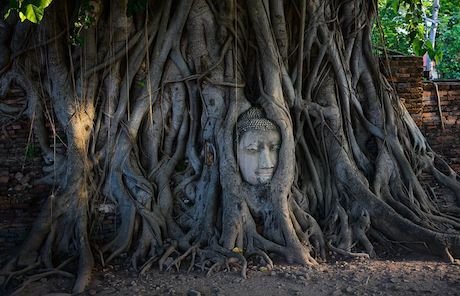
In Part 8 of this series, we looked at the schools that ‘participated’ and ‘did not participate’ in the Third Council of Buddhism, according to the Kathavatthu, the text that deals with the ‘points of controversy’ from schools other than Theravada. As was mentioned in Part 8, the Kathavatthu is classified as a canonical text in the Theravada tradition, as being part of the Abhidhamma Pitaka, although the text has been expanded up until the second century AD, as evidenced by the ‘late’ schools that are mentioned in the text. Likely, the text started out small and was expanded as more controversial viewpoints from other schools were encountered and dealt with as such.
The Kathavatthu includes a total of 217 points of controversy, divided into twenty-three chapters, where each point is associated with one or more schools, although a few are not assigned to any particular school at all. Due to a large number of doctrinal points covered, I have divided this Part 12 of the series into seven chapters, with each chapter covering one or more of the schools and their doctrinal points of ‘controversy.’
The total number of points of ‘controversy’ for each school covered in this chapter:
Pubbaseliyas: 30
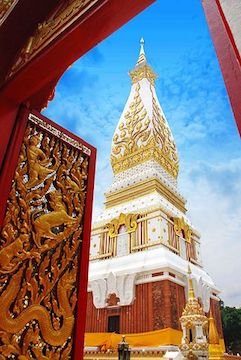
Overview of the chapters that cover the various schools:
- Chapter 1 — Vajjiputtakas, Sammitiyas, Sabbatthivadins
- Chapter 2 — Kassapikas, Mahasanghikas
- Chapter 3 — Andhakas
- Chapter 4 — Pubbaseliyas
- Chapter 5 — Aparaseliyas, Rajagirikas, Siddhatthikas, Gokulikas, Bhadrayanikas, Mahimsasakas
- Chapter 6 — Uttarapathakas
- Chapter 7 — Hetuvadins, Vetulyakas, Not assigned to any school, No points assigned
In this post we will be looking at the schools for Chapter 4 — Pubbaseliyas
The given name for the schools in this post follow the Theravada name designation as mentioned in the Kathavatthu text, followed by the Sarvastivada name designation by Vasumitra in his Samaya-bhedoparacanacakra text. The Kathavatthu is divided into twenty-three chapters. Each point of controversy’s headline listed here starts out with the Kathavatthu reference of book (in Roman numerals) and point, i.e., IX. 4 means book nine, point four.
Section 1 — Pubbaseliyas (Uttarasaila = Purvasaila) (30 points of controversy)
This is the school who geographically identify themselves as those who dwell as eastern highlanders in the Andhra region. According to Tibetan sources, they were so called because they lived on the Purva Mountain. They were also called Uttara (North) because this mountain was to the North of the Caitya mountain of the Caityasaila school.
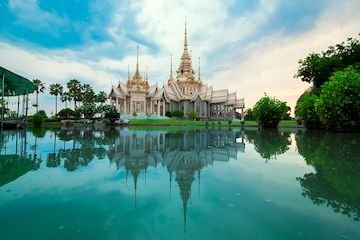
Point 1 — II. 1. Of Conveyance by Another
That an Arahant has impure discharge.
This was asked concerning a notion entertained by the Pubbaseliyas and Aparaseliyas. These had noted seminal discharge among those who professed Arahantship in the belief that they had won that which was not won, or who professed Arahantship, yet were overconfident, and deceitful. Also, they wrongly attributed to devas of the Mara (The personification of evil and temptation) group the conveyance, to such, of an impure discharge. This leads to the second question since even a pure discharge is caused by passion.
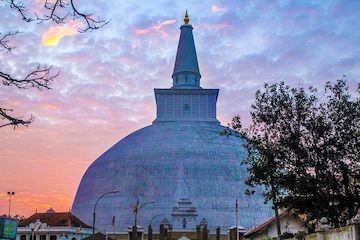
Point 2 — II. 2. Of the Knowledge of the Arahant
That the Arahant may lack knowledge (annana). (note 1)
The Pubbaseliyas hold that, because the Arahant was liable to be ignorant and to get perplexed about facts concerning everyday life and to be surpassed in such knowledge by others, an Arahant might be considered as lacking knowledge or insight, as given to doubt, and as inferior to some. These views are refuted in this and the next two discourses.
Note 1: Annan, is less often used as a technical term in religion than avijja, ignorance and moha, (the 3 poisons) see SN ii. 4; SN v. 127, 429.
Point 3 — II. 3. Of Doubt in the Arahant
That an Arahant may have doubts.
This discourse resembles the previous point 2, sentence for sentence—substituting ‘doubt’ (kankha) for lack of knowledge and ‘perplexity’ (vicikiccha) for ignorance—but with the following exceptions:
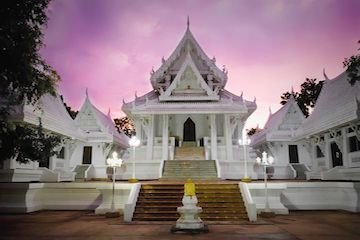
Point 4 — II. 4. Of the Arahant being Excelled by Others:
That the Arahant is excelled by others.
Here again, the argument resembles that of point 2, a section for section, substituting ‘excelled by others’ for ‘lack knowledge,’ and revealing the following exceptions (explained in the text).
Point 5 — II. 5. Of Articulate Utterance during Ecstasy:
That there is articulate utterance (bhedo) on the part of one who has entered into Jhana.
Pubbaseliyas and others that anyone in First Jhana at the moment of attaining the first or Stream-Winner’s (first step towards enlightenment) Path, uttered the truth: ‘Suffering!’ Pubbaseliyas or Stream-Winner's Path first Jhana is still suffering is refuted by the Theravadin.
On the term bhedo: is literally breaking or dividing off or up. It can also be translated as expression.

Point 6 — II. 6. Of Inducing Insight by saying ‘Suffering!’
That induction of insight by the word ‘suffering!’ is a factor of and included in the Path.
An opinion of the Pubbaseliyas is that repeating the word ‘dukkha!’ (suffering) induced insight (nanam), and was thus a factor and part of the Path to enlightenment. They admit it as true for those only who are qualified to win insight (vipassaka).
Point 7 — VI. 2. Of Causal Genesis
That the causal elements in the law of causal genesis are unconditioned.
Because of the text in the chapter on causation— ‘whether Tathagatas arise or do not arise, this elemental datum which remains fixed, some, as the Pubbaseliyas and the Mahimsasakas, have arrived at the view here affirmed.
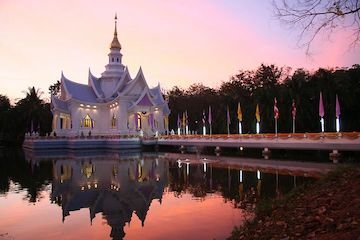
Point 8 — VI. 3. Of the Four Truths
That the Four Truths are unconditioned.
Some, like the Pubbaseliyas, hold this belief, deriving it from the Sutta: ‘These four, monks, are stable, constant,’ etc. Pubbaseliyas draw a distinction between a ‘fact’ and a ‘truth,’ considering that the former is conditioned, the latter unconditioned. In the Third Truth, they disallow the existence of any corresponding fact (lakkhana-saccam).
Point 9 — VIII. 2. Of an Intermediate State
That there is an intermediate state of existence.
Some, for example, the Pubbaseliyas and Sammitiyas, by a casual acceptance of the Sutta-phrase—‘completed existence within the interval’—held that there is an interim stage where a being awaits re-conception for a week or longer. The counter-argument is based on the Exalted One’s dictum that there are three states of becoming only—the Kama-, the Rupa-, and the Arupa-worlds. (SN ii.8) Also, it is because of that dictum that the opponent (in so far as he is orthodox) has to deny so many of the questions.
Point 10 — VIII. 3. Of the Pleasures of Sense
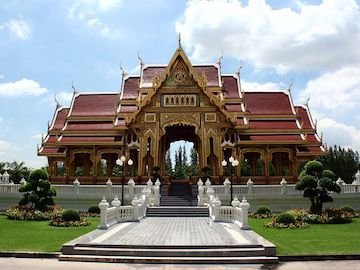
That the kama/karma-sphere means only the fivefold pleasures of sense.
This discourse is intended to teach those who, like the Pubbaseliyas, contract the meaning of kama-dhatu (element or datum of desire) to that of kama-guna (pleasurable sensations), ignoring the difference in the meaning of the two terms. It is true that in the Sutta—‘There are these five kinds of pleasurable sensations, monks’ (MN i.85)—the whole world of kamadhatu is implied. However, generally kamadhatu may stand for vatthukama, objects of sense-desire; kilesakama, corrupt, worldly desires; and kamabhava, or the eleven lowest planes of existence (from purgatory to the six lowest heavens). In the first term kama means ‘to be desired’; in the second, it means both ‘to be desired’ and ‘to desire.’ However, in the last term kama means ‘to be desired’ or ‘desiring,’ or ‘place where objects of sense happen.’ Dhatu, as always, means self-existing ultimate, without entity, non-substantial.
Point 11 — VIII. 4. Of Sense-Desires
Whether the subjective sense-desires or the objective five fields of sense constitute kamas.
Going merely by the Sutta last quoted above, some, like the Pubbaseliyas, hold the latter view. The Theravadin shows that ‘corruptions’ alone indeed constitute sensuality.
Point 12 — VIII. 10. Of Vital Power
That there is no such thing as a material vital power.
Some, as, for instance, the Pubbaseliyas and Sammitiyas, hold that, because vital power is an immaterial fact, distinct from consciousness, therefore there is nothing material in it.
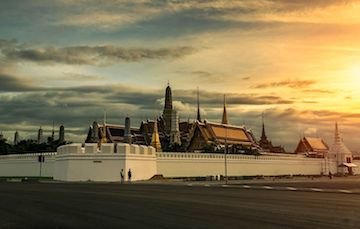
Point 13 — VIII. 11. Of a Result of Karma
That because of karma an Arahant may fall away from Arahant ship.
Such is an opinion held, for instance, by the Pubbaseliyas and Sammitiyas, the Arahant, so falling is one who, in a former birth, calumniated one who was then Arahant.
Point 14 — IX. 2. Of the Ambrosial (amata: the deathless) as an Object by which we are Bound
That the Ambrosial as an object of thought is a ‘fetter.’
This is an opinion held, for instance, by the Pubbaseliyas, and due to careless inference from such passages as ‘He fancies things about Nibbana.’ (MN i.4)
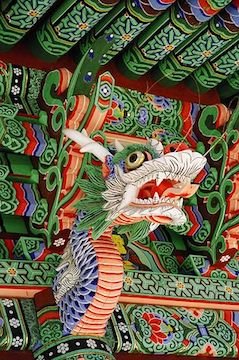
Point 15 — IX. 9. Of Sound as purely Mental
That sound is nothing more than the diffusion of initial and sustained mental application. (that sounds are psychical thrills, vipphara, or reverberations, or vibrations)
Because it was said, ‘Applied and discursive thinking is productive of speech,’ (MN i.301) therefore some — for instance, the Pubbaseliyas—hold that sounds may occur even when cognition is proceeding without work of sense, because they consist merely in ‘vibrations’ (for irradiation) of initial and sustained application of mind. (DN iii.104, AN i.170) The Theravadin submits that if sound can be so specialized, each mental property would send forth its own peculiar sounds. If not, then we cannot speak of auditory cognition of a sound that is merely a matter of intellect, and not an object of sense. However, the Word: ‘Hearing a sound, irradiation of initial application of mind, he reveals’ . . . shows there is auditory consciousness also.
Point 16 — IX. 10. Of Speech conforming to Thought
That speech Bubbaseliyas does not accord with thought.
Since anyone can decide (to think about one thing and) talk about another, therefore there is no accord, no sequence, no conformity between thought and speech. Speech can proceed even without thought. Such is the view of some—for instance, the Pubbaseliyas.
Point 17 — IX. 11. Of Action conforming to Thought
That action does not accord with thought.
Since anyone, when proposing to go in one direction, can go elsewhere, some—for instance, the Pubbaseliyas—hold that action is not in accord or conformity with or consequent upon thought.
Point 18 — XI. 3. Of Insight and Ordinary Consciousness
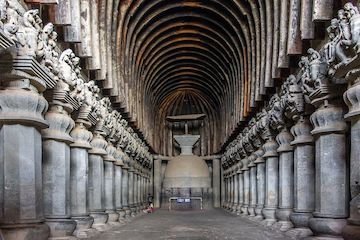
That insight (nana) is not conjoined with consciousness.
Some, like the Pubbaseliyas, hold that, since an Arahant, who is said to have insight on account of that which he has won by the Path, may experience sense-cognitions which are not conjoined with that insight; therefore insight is independent of ordinary consciousness. The criticism shows that, if insight be detached from consciousness, it must be identifiable with one of the categories of things that are other than consciousness.
Point 19 — XII. 7. Of Murder
That a person who has attained to sound views (note 1) may yet designedly commit murder.
Some, like the Pubbaseliyas, hold that since a person who has attained to sound views has not entirely put away enmity, and since he who takes life has enmity in his heart, therefore one who thinks rightly may yet commit willful murder.
Note 1: Ditthisampanno puggalo, a technical term of the religious life, wherein the word ditthi no longer means erroneous opinion, but the opposite. This is still a learner (sekha), but the learner has put away all but the last fetters and residual lust, hate, and nescience, and is incapable, so the Buddha taught, of any of the misdeeds or of the irreverence mentioned above. (SN ii.48)
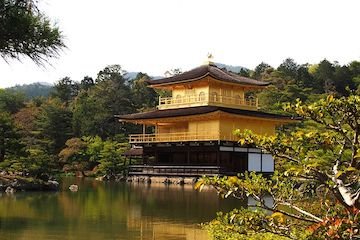
Point 20 — XIII. 4. Of one whose Salvation is Morally Certain (niyata)
That one who is morally certain of salvation has entered the Path of Assurance (niyama).
Niyama (Assurance) is of two kinds, according as it is in the wrong or the right direction. The former is conduct that finds retribution without delay (anantariyakamma), the latter is the Ariyan Path. And there is no other. All other mental phenomena happening in the three planes of being are not of the invariably fixed order, and one who enjoys them is himself ‘not assured.’ Buddhas, by the force of their foresight, used to prophesy: ‘Such an one will in future attain to Bodhi’ (Buddhahood). This person is a Bodhisat, who may be called Assured (Niyata), by reason of the cumulative growth of merit. Now the Pubbaseliyas and Aparaseliyas, taking the term ‘Assured’ without distinction as to direction, assumed that a Bodhisat was becoming fitted to penetrate the Truths in his last birth, and therefore held that he was already ‘Assured.’
Point 21 — XIII. 9. Of the Unmorality of a Natural Desire for Objects of the Mind
That to crave for objects of the mind is unmoral.
Some, like the Pubbaseliyas, hold that the sixth kind of objects of sense-experience, (note 1) coming after any of the five forms of sensations, is neither moral nor immoral.
The coordination of different successive sensations as a concrete single percept and image—e.g., of orange color, smell, roundness, and certain other touches into an orange—was conceived by Buddhists as a sort of sixth sense.
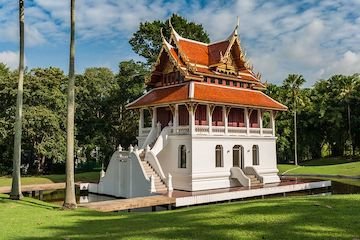
Point 22 — XIII. 10. Of Desire for Ideas and the Cause of suffering
That the natural desire for objects of mind is not the Cause of suffering.
This, too, is an opinion of the Pubbaseliyas and others. The argument follows the same as point 21.
Point 23 — XIV. 2. Of the (pre-natal) Development of Sense-Organs
That the sense-mechanism starts all at once as life in the womb.
Our doctrine teaches that at a human rebirth the development of the embryo’s sense-mechanism or mind is not congenital, as in the case of angelic (Opapatika) rebirth. In the human embryo, at the moment of conception, the coordinating organ (manayatana) and the organ of touch alone among the sense-organs, are congenital. The remaining four organs (eye and ear mechanism, smell and taste mechanism) take seventy-seven days to come to birth, and this is partly through that karma which brought about conception, partly through some other karma. (technically called janaka-karma and upatthambaka-karma, reproductive and maintaining karmas.) However, some, like the Pubbaseliyas and the Aparaseliyas, believe that the sixfold sense-organism takes birth at the moment of conception, by the taking effect of one karma only, as though a complete tree were already potentially contained in the bud.
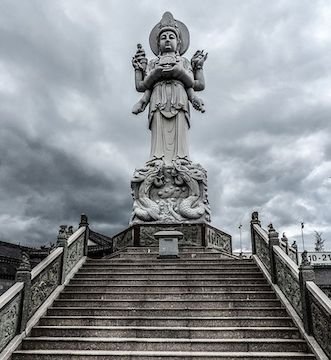
Point 24 — XIV. 9. Of the Unincluded (Excluded)
That erroneous opinions may enter into ‘the Unincluded.’
Since when a man of the world has attained to Jhana, he may be called passionless as to sense-desires, but not free from erroneous opinions, some, like the Pubbaseliyas, hold that erroneous views also beset that other consciousness which is ‘Unincluded.’
The opponent would break down the exclusive content of the term apariyapanna—the Unincluded—which, according to the Abhidhamma-Pitaka, is reserved for the consciousness and conscious experiences of those qualifying in the Path, and for Nibbana. Such consciousness would not be shared by a ‘man of the world’ or ‘average person’ (puthujjana, a worldling). It is excluded in the mental range of one whose interests are confined to any sphere of life earth or in heaven.
Point 25 — XVI. 4. Of Attending to Everything at Once
That one can attend to everything simultaneously.
Attention has two aspects, according to the method or the object of attention. To infer from the observed transience of one or more phenomena that ‘all things are impermanent’ is attention as (inductive) method. However, in attending to past things, we cannot attend to future things. We attend to a particular thing in one of the time-relations. The two aspects are attention by way of the object of consciousness. Moreover, when we attend to present things, we are not able at the present moment to attend to the consciousness by which they arise. Nevertheless some, like the Pubbaseliyas and Aparaseliyas, because of the Word, ‘All things are impermanent,’ hold that in generalizing we can attend to all things at once. Moreover, because they hold that in so doing we must also attend to the consciousness by which we attend, the argument takes the line as stated.

Point 26 — XVIII. 8. Of Hearing in Jhana
That one who has attained Jhana hears sound.
The opinion is held by some—the Pubbaseliyas, for instance—that because the Exalted One called sound a thorn to First Jhana, and since sound, if not heard, cannot be a thorn in the flesh of one who had attained that state, it was inferable that such a one was able to hear.
Point 27 — XIX. 3. Of the Fruits of Life in Religion
That the fruit of recluse-ship is unconditioned.
Our doctrine has judged that the term ‘fruits of life in religion’ means the mind in general which results from the processes of thought in the Ariyan Path and occurs in the mental process attending the attainment of its Fruits. However, there are some, like the Pubbaseliyas, who, taking it otherwise, mean by it just the putting away of corruptions and success therein.
Point 28 — XIX. 4. Of Attainment (patti)
That attainment is unconditioned.
Some, like the Pubbaseliyas again, hold that the winning of any acquisition is itself unconditioned.
Point 29 — XX. 6. Of Insight
That insight into the twelve-fold base is spiritual (lokuttara: supra-mundane, not-of-this-world).
There is an opinion—held by the Pubbaseliyas, for instance—concerning the ‘twelve constituent parts’ in the First Sermon, ‘The Turning of the Dhamma-Wheel’—namely, that knowledge based on those twelve belongs to the Four Paths and Fruits. The Opponent over-emphasizes the super-normal side of it.

Point 30 — XXII. 8. Of Momentary Duration
That all things are momentary conscious units.
Some—for instance, the Pubbaseliyas and the Aparaseliyas—hold that, since all conditioned things are impermanent, therefore they endure but one conscious moment. Given universal impermanence—one thing ceases quickly, another after an interval—what, they ask, is here the law? The Theravadin shows it is but arbitrary to say that because things are not immutable, therefore they all last but one mental moment.
In the next article, we will discuss how the Theravada school dealt with the doctrinal points from other Buddhist schools, as recorded in their Katha-vatthu text — Chapter 5 — Aparaseliyas, Rajagirikas, Siddhatthikas, Gokulikas, Bhadrayanikas, Mahimsasakas.

- Introduction to the history of Buddhist Councils and Schools-Part 1
- The Buddhist Councils — Who, when, where, and why?Part 2
- The Buddhist Councils — Who, when, where, and why?Part 3
- The History Of ‘Northern Buddhists’ of Sarvastivada - Part 4
- The History Of ‘Northern Buddhists’ of Sarvastivada - Part 5
- Buddhist schools at the time of the First ‘Maha-Kasyapa’ Council at Rajagaha. - Part 6
- Buddhist schools at the time of the First ‘Maha-Kasyapa’ Council at Rajagaha. - Part 7
- Buddhist schools at the time of the Third ‘Moggaliputta Tissa’ ‘Asoka’ Council - Part 8
- Buddhist schools at the time of the Fourth ‘Vasumitra’ ‘Kanishka’ Council at Jalandhar. - Part 9
- Buddhist schools in the 5th Century A.D. according to the Chinese pilgrim Fa-hsien - Part 10
- Buddhist schools in the 7th Century A.D. according to the Chinese pilgrim Yuan-Chuang-Part 11
- How the Theravada school dealt with doctrinal points from other schools-Part 12-The Katha-vatthu — Chapter 2
- How the Theravada school dealt with doctrinal points from other schools The Katha-vatthu — Chapter 3 — Part 12 "Continued"
- How the Theravada school dealt with doctrinal points from other schools - The Katha-vatthu — Chapter 3 — Part 12
- The Ten Stages of the Mahayana Bodhisattva Path-The Two Preliminary Stages-Part 1
- The Ten Stages of the Mahayana Bodhisattva Path-The Two Preliminary Stages-Part 2
- The Ten Stages of the Mahayana Bodhisattva Path-The Two Preliminary Stages-Part 3
- The Ten Stages of the Mahayana Bodhisattva Path-The Two Preliminary Stages-Part 4
- The Ten Stages of the Mahayana Bodhisattva Path-The Two Preliminary Stages-Part 5
- The Ten Stages of the Mahayana Bodhisattva Path-The Two Preliminary Stages-Part 6
- The Ten Stages of the Mahayana Bodhisattva Path-The Two Preliminary Stages-Part 7
- The Ten Stages of the Mahayana Bodhisattva Path-The Two Preliminary Stages-Part 8
- The Ten Stages of the Mahayana Bodhisattva Path-The Two Preliminary Stages-Part 9
- The Ten Stages of the Mahayana Bodhisattva Path-The Two Preliminary Stages-Part 10
- The Ten Stages of the Mahayana Bodhisattva Path-The Two Preliminary Stages-Part 11
- The Deathless In Buddhism
- The "Timeless" Teaching-Being Beyond Temporality
- The Nine Successive Cessations In buddhist Meditations - Part 1
- The Nine Successive Cessations In buddhist Meditations - Part 2
- The Nine Successive Cessations In buddhist Meditations - Part 3
- The Twelve Links Of Dependent Origination
- THINGS to DEVELOP and THINGS to AVOID
- The First Noble Truth
- The Second Noble Truth
- The Third Noble Truth
- The Fourth Noble Truth
- 10 Fold Path Series
- EATING MEAT — WHY THE BUDDHA WAS NOT A VEGETARIAN
I will flag comment spam at 1% strength. If you keep on spamming my post, I will flag you at 100%. I don't care if you have limited English abilities, write a couple of sentences about this article, no copy-paste, please. I will flag: one sentence comments, links to your blog and begging for up-votes and follows. Also, I will flag comments that have nothing to do with my blog's article. I will also check your comment section to see if you have been comment spamming on other blogs.
Can you clarify the concept of the duration of things according to the Theravadin? So far I am understanding that all things last very briefly.
I will start out with the fundamental teachings of impermanence @macusantoniu, there are complicated arguments between Theravada and Mahayana, which I feel are nit-picking (giggles), the two schools agree in general regarding the details, so I will go into the Theravada view of the the Three Marks of Existence.
I suck at debating Theravada vs. Mahayana concepts of no-self and the impermanence of a thing, like our mind and body are things, things that are dependent on other things to be what they are, as a table, which is a label for bits of wood, glue, nails, varnish, etc., bits of wood are little dead cells, little cells are made out of atoms and atoms are mostly empty....hahaha
If you want to go into thoughts, feelings, memories I can give you links into how long they last, if I remember the the luminous mind, my favorite mysterious and controversial bhavanga citta, there are different types of citta, which depending on context can mean momentary.
This was my first introduction:
These three basic facts of all existence are:
Wow. You gave me homework enough for a year! Thanks for taking your time in answering my question and for giving it importance by providing all those valuable links. I hope that my busy schedule allows me to dig into everything you have given me.
Just read a little bit at a time @marcusantoniu and try to find examples in your daily life. I've been studying for over 20 years, and this is how I progressed, one little step at a time <3
I love to study and find examples in my life that help me understand the teachings deep down in my heart and mind.
I find it interesting that they differentiate between what is fact and what is truth. A very thorough article which exhibits your understanding of Buddhism thanks @reddust
@enjoywithtroy, in Mahayana Buddhism there are two truths, relative and absolute, which are not mystical but factual and there are lots of debates on what is truth, existence, and facts. No view through our limited senses and conditioned mind is the absolute truth Ultimate Torment up to and including the post-meditation experience of bodhisattvas on the tenth bhūmi—are relative. Moreover, there are two kinds of relative truths, the incorrect relative, and the correct relative. In essence, the absolute is the basic space of phenomena (dharmadhātu)... The concept of the metaphysical zero triggers my cursing habit, I have a hard time going there but my husband doesn't, he loves to trigger me because when I start cursing, I guess I am funny...hahaha
Thanks @reddust for continuing the great series of the early schools of Indian Buddhism. I learn a lot about his greatness as how he spread his knowledge in India. Really the schools are the great source of religion and education. Can you please tell me how many Buddhism school in worldwide? Was Buddha only spreading his knowledge in Asia or others continent? Thanks again for your brilliant historical content.
hahahahahahahahahahahahahahaha
Thanks for regularly update the early school of indian Buddhism series.....many historical places in india..india is most beautiful country in the world.....natural beauty attracts the peoples.... The early buddism schools are those schools into which the buddhist..Map of the major geography centers of Sectarian buddhist schools in india....wonderful buildings Education is more important in our life...thanks for sharing..
India is full of different cultures and religions with a deep history of conflict and the struggle to find peace and enlightenment. Someday I hope to visit @asadchughtai, thank you for stopping by...
we will be looking at the general history and development of the early Buddhist schools according to the texts
Most of the ancient literature of Buddhism and of India generally
nice post
amazing @reddust..
You couldn't of read all that in 2 minutes...lolol
Jajajajajajajaja @reddust you catch it and it looks like this, how are you this days my friend?
My family is happy and healthy, and that makes me happy and healthy @dim753. I hope you and your Mom are doing well; I am happy you stopped by and said hello, I hope you enjoy the article. Some of the points are fascinating, especially about masturbating arahants...hahaha
Great dear @reddust, about me i can say you that i lost my work a month ago and now i'm trying to find a new one i feel i little bit stressed but i belive God can send me a good job :), i'm gonna read your article it sounds interesting. Regards
I will give you support here on Steemit @dim753, I haven't done any curating for a couple months and I need to start, you and your family and country are in my prayers.
Thanks a lot dear @reddust by your support in this moment, now i'm visiting trying to find a job asap but the economy looks difficult but with the help of God i think i will find a place i'm sure of that :). Thanks again and the karma will give you all good you do ;). Regards